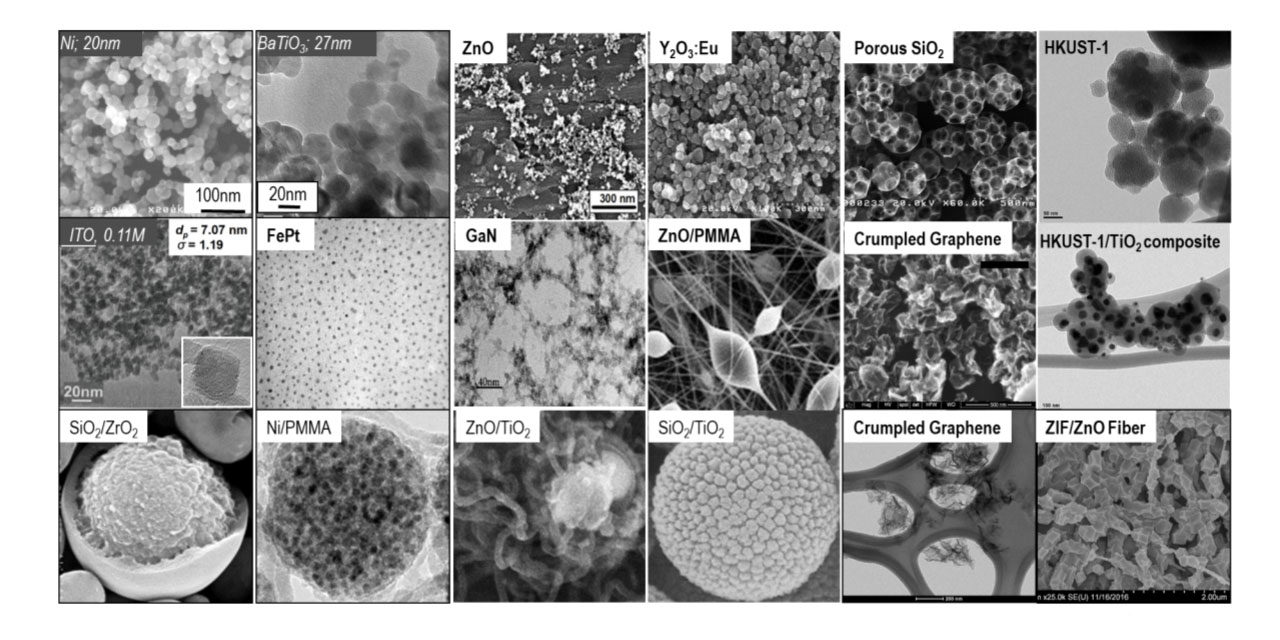Design, Manufacturing and Processing of Particles and Fibers
This thrust has major research focuses, including (but not limited to) particle/fiber design and synthesis, particle/fiber processing, and particle transport and fate. To design and produce particles targeted for various applications, scientific understanding of momentum, heat and mass transfer within particle systems/processes should be developed through both experimental and theoretical approaches. The control of the size, morphology, structure, as well as the surface functionality of particles and fibers is the major driving force. For practical applications, it is also necessary to have processing techniques for efficient coating, charging, classification, and fluidization of particles, powders and fibers. The transport kinetics and the fate of particles should be investigated through both online measurements and modeling, which are important for engineering design and applications of the particles.
General Processes for Particle Design and Synthesis
The gas-to-particle conversion, and droplet-to-particle conversion are two major particle formation pathways in aerosol processes. Both processes include major steps of nucleation and growth to form final particles. Examples processes include but not limited to chemical vapor deposition (CVD), physical vapor deposition (PVD), atomic layer deposition (ALD), spray pyrolysis (SP), and spray drying (SD).


Examples of Particles/Fibers
Particles with various sizes and morphologies can be formed in aerosol routes. Several examples are shown in the figure, ranging from nanoparticles, core-shell particles, porous particles, nanofibers, as well as crumpled 3D balls.

